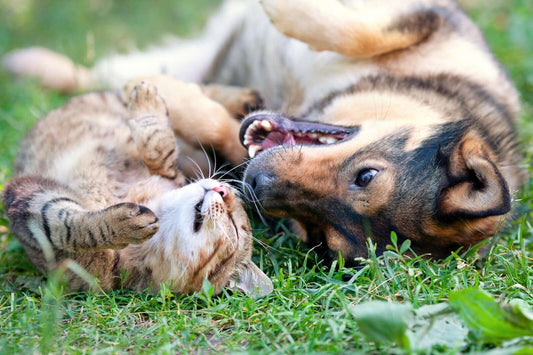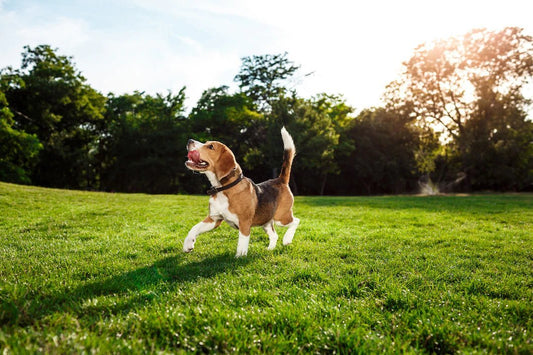Moving is stressful. Moving with a pet is even more stressful. For both you and your pet. Ever since the pandemic began last year we’ve seen more pets being adopted than ever before. But that also means we have new parents who might be inexperienced with all the intricacies of taking care of a pet that they signed up for.
And even experienced pet parents will struggle with managing the stressors that come with a significant change such as moving houses. There’s a lot of conflicting information out there. But we dug deep to come with only what you need: The top 3 most useful tips for relocating with your pet.
So, let’s get right down to it.
TIP #1
Prep your pet for the move and a new life in advance
Just as moving is stressful for you, it’s an anxious time for your pet too. A change in routine, location, people. They are all unsettling factors. And just as much preparation as you need, they do too. How do you do that? There are different things you can do to prepare your pet for a move.
Try to keep your cool
In an unfamiliar and stressful situation they look to you, the only person they trust, for reassurance. Researchers from Linkoping University in Sweden found that dogs get affected and mirror their owners’ stress. If you are tense and worried, your dog (or cat) can feel it too. Anxiety is common before, during, and immediately after a move but try to relax and let your pet relax too.
Get tags or trackers
If you’ve been thinking of getting your dog or cat a name tag, now’s the time. Dogs and cats are both liable to wander off at any time and it would be devastating to lose your pet at a crucial time like this. When preparing for a move you are likely to be more distracted, and you might not pay as much attention to your pet. A tag or a GPS pet tracker is invaluable in this scenario. If they do wander, finding your pet should be easier no matter where they are.
Consult your vet
Whether you are moving houses within the city or moving to a different place altogether, it’s important to first consult your vet. Your vet should give you all the medical records and other information related to your pet to ensure a safe passage to the new place.
Make a list of these questions before you tell your vet about your move:
A Vet’s Advice: “Never dispose of older bedding and pet toys to buy new ones in the new place.”
Shifting houses is the best time to sort through your belongings and discard things you don’t need anymore. While getting rid of old items is mostly a good idea do reconsider it when it comes to your pet. Since this is a time when their anxiety increases they might need some old familiars like their blankets and toys to comfort them. Try to hang on to as many of their things as possible and slowly replace them when you are settled into the new place.
TIP #2
Keep moving day light and easy
The day you actually shift is usually chaotic with moving vans, cleaning, phone calls and other chores. Essentially, there are a lot of things your pet is unfamiliar with, which can send their heart rates racing. It’s important to keep them away from the center of the storm and let them feel as safe and comfortable as possible. Here are a few things to keep in mind to ensure that.
Take them to a calm space
If you’re moving houses within a city it’s easier to protect your pet from all the hubbub around by removing them from the activity. Leave them at a friend’s house or engage a pet sitter for the day. If these are options your pet is acquainted with it’s best to give them a calm space for the day till you sort things out.
Give them your time
Yes, moving day is crazy but do make sure to spare a few minutes of your time to attend to your pet. Play with them for a few minutes, talk to them, or just take them for a walk as per routine. It will reduce their anxiety and reassure them of your presence nearby.
Things to keep in mind when moving internationally
One of the first things to check is if your pet is fit enough to make the shift to a different country. When visiting the vet for a pre-travel check-up, make sure you get a fit-to-travel certificate for your pet along with an understanding of how to address any anticipated complications. Some breeds are doubly prone to risks and health issues and require special attention.
In some cases, it might be wiser to engage pet relocation experts as they’re familiar with the regulations and import norms for pets in different countries.
A Vet’s Advice: “If moving to a distant location, provide food and water at least an hour ahead of travel. Do not exercise your pet shortly before you’re due to travel, as the exertion and panting heightens their anxiety.”
Shifting to a different city or a country comes with its own complications. Aside from getting together all the necessary documents, it’s imperative to keep your pet safe during the move. Take them in a special carrier if you are travelling by train or even in your own car. Big changes in their routine and their personal space are upsetting and pets can react with irrational and unusual behavior like wandering off in a new neighborhood and getting lost.
TIP #3
Make it easy to settle in to the new place
Survived the move? Your work is not done yet. Your pet will need a lot of assistance from you to help them get used to the new environment and faces around them, especially in the first week. Here are a few things you can do to help them settle in easily.
Pet-proof your home and garden
You’re bound to have a lot on your hands after you shift to your new home. Reduce the risk of your pet bolting out the door or getting panicked when going into unfamiliar spaces by limiting their access to hazardous zones like the kitchen. Basic pet-proofing like keeping packing boxes out of their reach, disposing off plastic materials as soon as you're done unpacking, and closing cabinet doors properly are just a few things you can do to keep your pet safe and happy.
Contain them indoors
The first week is the most crucial. This is the time your pet’s curiosity gets the better of them most of the time. Even if they’re well trained, keep them on a leash when taking them for walks. Let them get used to new faces, new neighbors, and new corners. It will take a few weeks of restrained socializing for them to get used to the new area but it’s worth the trouble in the long-run.
A Vet’s Advice: “Give them a designated corner to settle in, with the things that they've always used and carry their scent.”
Just as your pet needs a bit of time to adjust to the move, they need time to get used to the new place too. Help them ease into your new home by setting out the things most important to them, like their bed, blankets, toys, bowls etc. first. Furniture and other items that they are most familiar with should go next to make a cozy, secluded corner for them to retire to when they feel anxious.
If you’re an experienced pet parent a lot of the things we’ve said here might be known to you already and would come to you naturally. Or perhaps you’re a beginner parent who is feeling completely at sea and struggling to manage your pet and a relocation. Either way, it’s always a good thing to have a checklist and some guidance to ensure a smooth move. This list should help you shift, safe and worry-free, into your new home and create many exciting memories!















